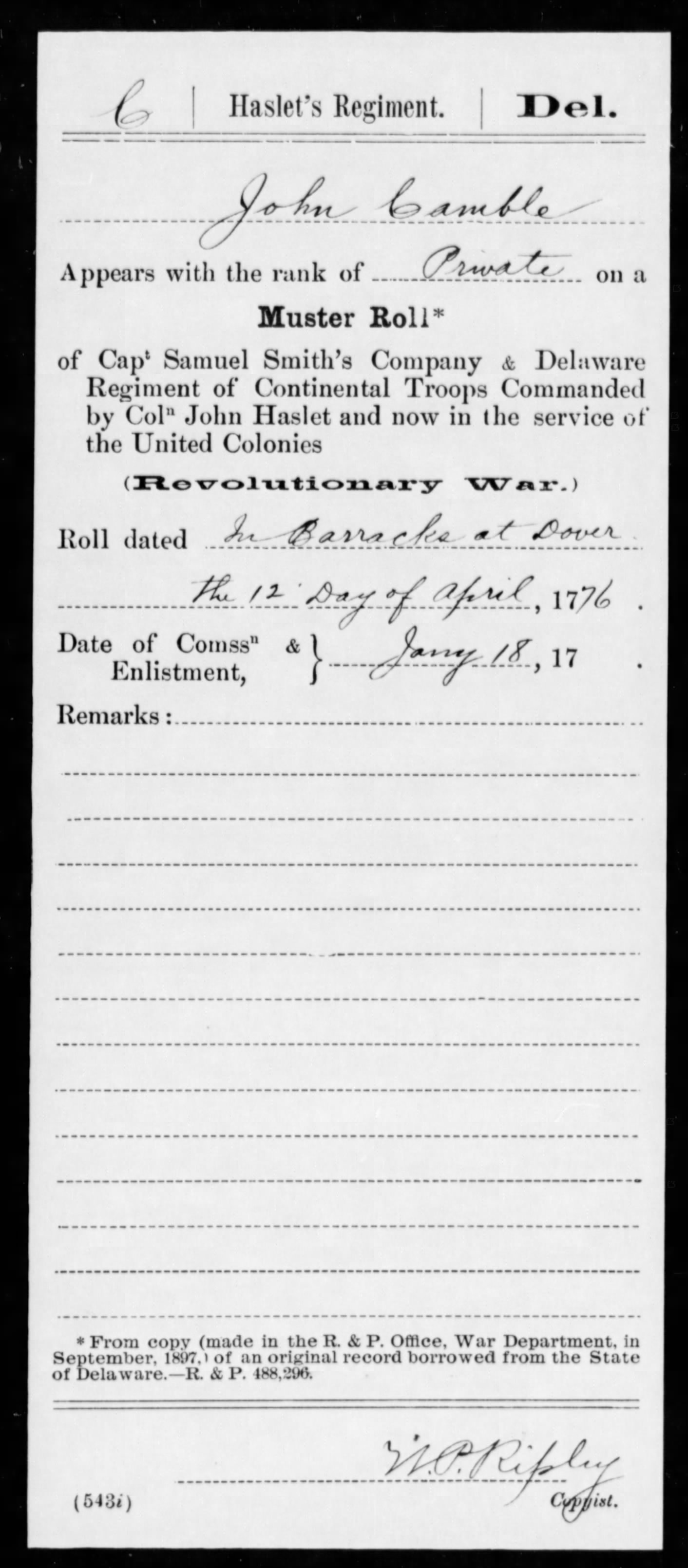I wonder how many men fought for American independence whose ancestors could not prove their active service. In February 2014, I wrote about my husband’s side of the family. John Campbell’s wife, Mary Jackson Campbell, struggled for nearly nine years trying to receive a widow’s pension of an old Revolutionary soldier. (See “Mary Jackson Campbell – It Took an Act of Congress – 52 Ancestors #4.”) Why was it so difficult for her to prove that her husband was a patriot?
In 1837, by the time that Mary Campbell decided that she needed relief because of her pecuniary circumstances, many of the possible witnesses were deceased. She herself seemed to have a fairly foggy memory of dates and military engagement’s. Yes, she had often heard of her husband speak of these his time during the war, but her sworn testimony on her husband’s service was quite vague. Service papers? Well, they had been deemed useless and burned.
Mary Campbell did eventually receive her pension, but John Campbell was only given credit for nine months of service. Did he really serve in the American Revolution? I found myself wondering if Mary’s attorney-grandson simply wore down the bureaucracy. Was it possible to learn more about John Campbell’s possible military service?
John Campbell appears in the American Genealogical-Biographical Index (AGBI). It indicates that he was born in Delaware in 1750. At this juncture, John’s parents are unknown. Other than his marriage to Mary Jackson on 21 Sep 1771, very little else is available on his life.
Tonight I reviewed the pension application again. Mary stated that her husband enlisted in late 1776 for a period of nine months. After that, he volunteered and was away from home for another two years. At the close of that period he enlisted again until the end of the war. Despite what seems to have been a true commitment to the cause of liberty, the claim could not be corroborated in the official record.
Mary seemed certain that her husband served under Captain George Latimore. The government responded that she would need to provide more information. They could not confirm Captain Latimore as a commanding officer. They wanted more proof. Interestingly, though, Caleb Bennett, a former Governor of Delaware, made the same claim about serving under Latimore in his pension application and he seemed to have no problem with the government:
Lt. Caleb P Bennett – Be it remembered that on the 24th day of March in the year of our Lord 1818 before the Honorable John Day Esquire one of the Judges of the Court of Common Pleas of the State of Delaware Comes Caleb P Bennett a resident of the Borough of Wilmington in the County of New Castle and State of Delaware who upon his solemn affirmation administered affirms and saith, that on the 28th day of March 1776, he enlisted in a Company of State Artillery commanded by Captain George Latimore for the term of nine months soon after was promoted to the first Sergeant of the Company, being raised for the defense of the aforesaid State & that in the month of June or July, the company both Officers and privates, solicited, or petitioned the proper authorities of the state to be attached to the Delaware Battalion then on their march or perhaps arrived at their destination in the neighborhood of New York, about the same time a Battalion of Flying Camp being raised, and commanded by Colonel Samuel Patterson of New Castle County to which the said Company was ordered to join and to act as a Company of Light Infantry to the aforesaid Battalion and remained in actual service during, and after the expiration of the term of Enlistment. (Transcribed by Will Graves)
Governor Bennett provided an affidavit to Mary Campbell stating that he remembered her husband serving with him under Captain Latimore and that they were both present at the Battle of Staten Island.
I couldn’t identify a Captain Latimore, but I did uncover a wiki for George Latimer, who was a lieutenant-colonel in the Revolutionary Army. Latimer was elected as an assemblyman from New Castle County, Delaware, in 1779. This was probably Bennett and Campbell’s commanding officer.
So where was the record of John Campbell’s service? Could it have been overlooked because of a tiny misspelling? It took just a bit of imagination to locate John Camble, who enlisted with Haslet’s 1st Delaware Regiment, and who appears on the muster roll in Dover, Delaware, for 12 April 1776.

John Camble on Muster Role for Haslet’s Regiment – Content Source: The National Archives Publication Number: M881 Publication Title: Compiled Service Records of Soldiers Who Served in the American Army During the Revolutionary War Publisher: NARA National Archives Catalog ID: 570910
A further check found that the 1st Delaware was part of a raid on Staten Island, NY, on August 21-22, 1777. Although the details don’t fit Mary Campbell’s timeline, they fit with the claims made by Caleb Bennett. Is it surprising that Mary was off on her dates? Don’t forget, she was going on her recollection of events from over 40 years earlier. The one thing she did remember, though, was that her husband was away for the duration of the war, making him one of the truly committed patriots fighting for American independence.